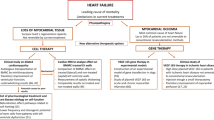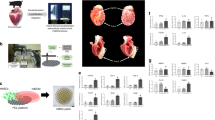Abstract
Skeletal myoblast transplantation has now entered the clinical arena as a potential means of restoring function to scarred myocardium. While the current experience derived from phase I trials suggests that cell implantation during coronary artery bypass operations is a straightforward and safe procedure, routine use of myoblast transplantation would certainly be premature. Two major issues have not yet been addressed: firstly, the risk–benefit ratio needs to be assessed, specifically whether the potential proarrhythmic risk associated with myoblast transplantation is supported by the results of an ongoing large, randomized study, and if so, whether this risk is offset by a benefit in terms of improvement of left ventricular function and patient outcome. Secondly, this putative benefit will then have to be weighed against the financial burden inherent to this type of procedure, to assess whether the cost–effectiveness ratio is favorably shifted and supports the expanded indication of myoblast transplantation during coronary artery revascularization in patients with severe ischemic heart failure.
This is a preview of subscription content, access via your institution
Access options
Subscribe to this journal
Receive 12 print issues and online access
$209.00 per year
only $17.42 per issue
Buy this article
- Purchase on Springer Link
- Instant access to full article PDF
Prices may be subject to local taxes which are calculated during checkout
Similar content being viewed by others
References
Dowell J et al. (2003) Myocyte and myogenic stem cell transplantation in the heart. Cardiovasc Res 58: 336–350
Menasche P et al. (2003) Autologous skeletal myoblast transplantation for severe postinfarction left ventricular dysfunction. J Am Coll Cardiol 41: 1078–1083
Herreros J et al. (2003) Autologous intramyocardial injection of cultured skeletal muscle-derived stem cells in patients with non-acute myocardial infarction. Eur Heart J 24: 2012–2020
Siminiak T et al. (2004) Autologous skeletal myoblast transplantation for the treatment of postinfarction myocardial injury: phase I clinical study with 12 months of follow-up. Am Heart J 148: 531–537
Dib N et al. (2005) Safety and feasibility of autologous myoblast transplantation in patients with ischemic cardiomyopathy: interim analysis from the United States experience. Circulation 112: 1743–1747
Hagège AA et al. (2003) Viability and differentiation of autologous skeletal myoblast grafts in ischaemic cardiomyopathy. Lancet 361: 491–492
Pagani F et al. (2003) Autologous skeletal myoblasts transplanted to ischemia damaged myocardium in humans. J Am Coll Cardiol 41: 879–888
Leobon B et al. (2003) Myoblasts transplanted into rat infarcted myocardium are functionally isolated from their host. Proc Natl Acad Sci USA 100: 7808–7811
Rubart M et al. (2004) Spontaneous and evoked intracellular calcium transients in donor-derived myocytes following intracardiac myoblast transplantation. J Clin Invest 114: 775–783
Bigger JT (1997) Prophylactic use of implanted cardiac defibrillators in patients at high risk for ventricular arrhythmias after coronary artery bypass graft surgery. Coronary Artery Bypass Graft (CABG) Patch Trial Investigators. N Engl J Med 337: 1569–1575
Tambara K et al. (2003) Transplanted skeletal myoblasts can fully replace the infarcted myocardium when they survive in the host in large numbers. Circulation 108 (Suppl I): 259–263
Curtis AB et al. (1998) Epicardial cardioverter-defibrillators do not cause postoperative arrhythmia. The CABG Patch Trial Investigators. Coronary Artery Bypass Graft. Am J Cardiol 82: 1114–1117
Author information
Authors and Affiliations
Corresponding author
Ethics declarations
Competing interests
The authors declare no competing financial interests.
Rights and permissions
About this article
Cite this article
Menasché, P., Desnos, M. & Hagège, A. Routine delivery of myoblasts during coronary artery bypass surgery: why not?. Nat Rev Cardiol 3 (Suppl 1), S90–S93 (2006). https://doi.org/10.1038/ncpcardio0406
Received:
Accepted:
Issue Date:
DOI: https://doi.org/10.1038/ncpcardio0406
This article is cited by
-
Launching a clinical program of stem cell therapy for cardiovascular repair
Nature Clinical Practice Cardiovascular Medicine (2007)



